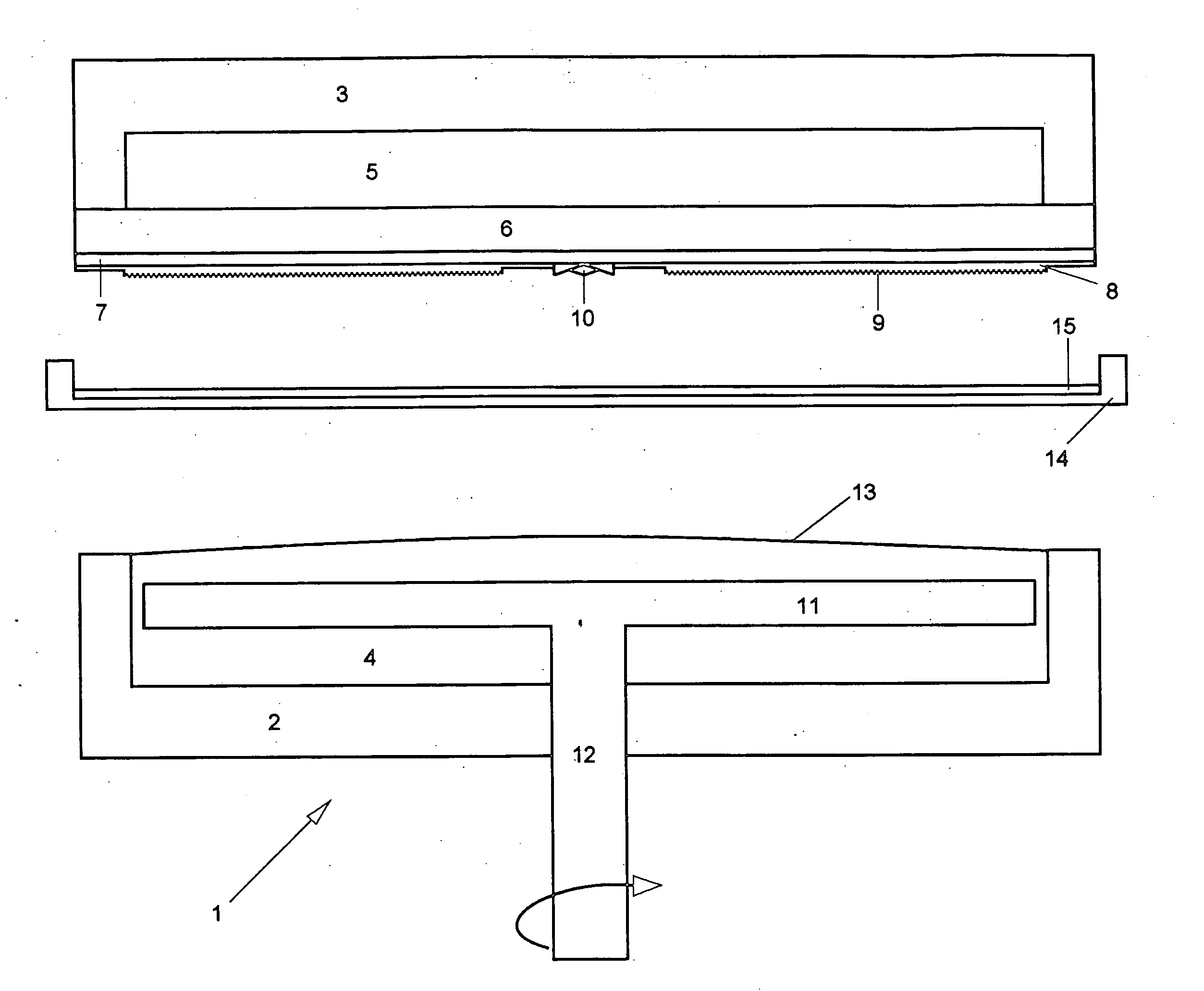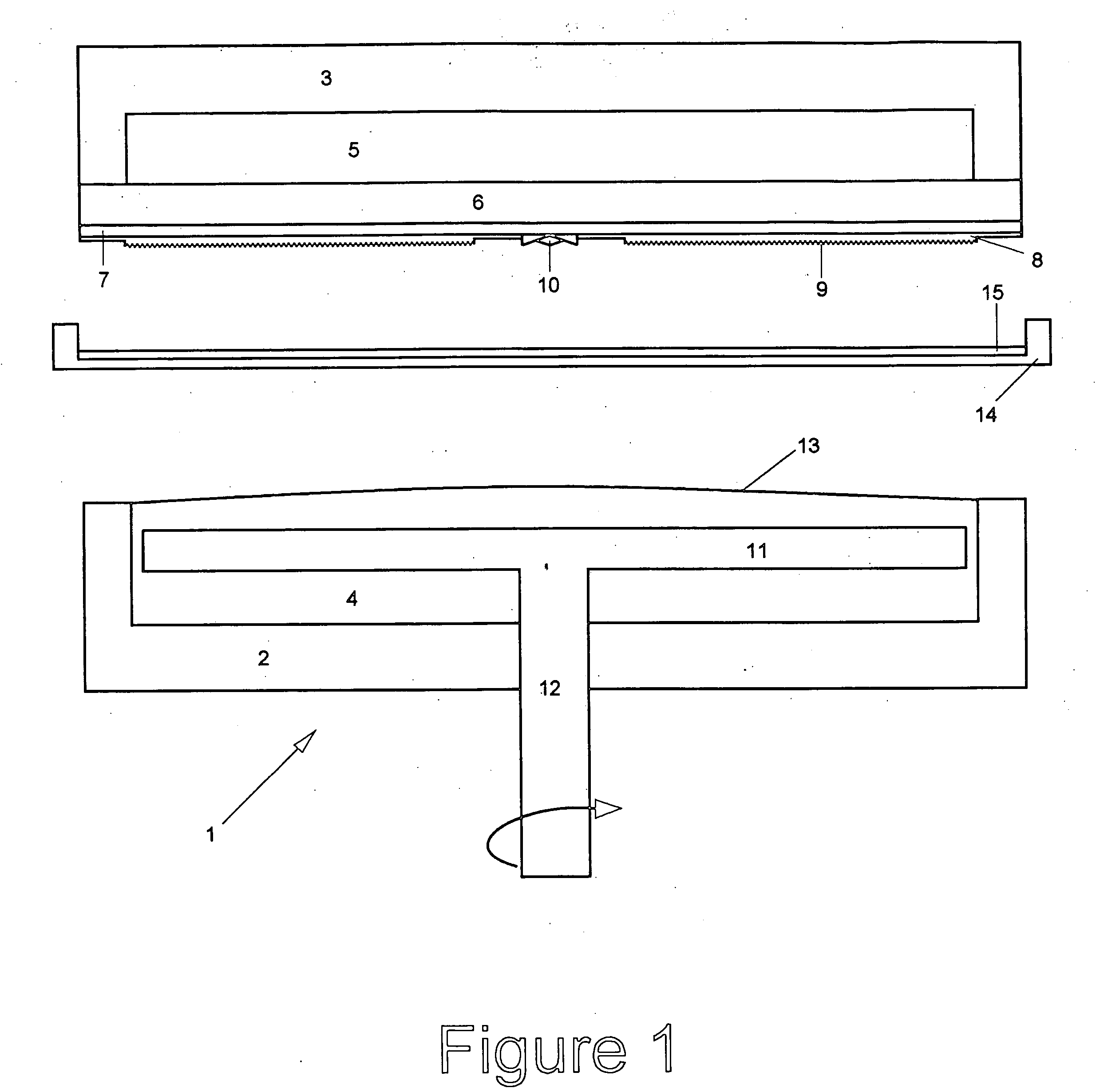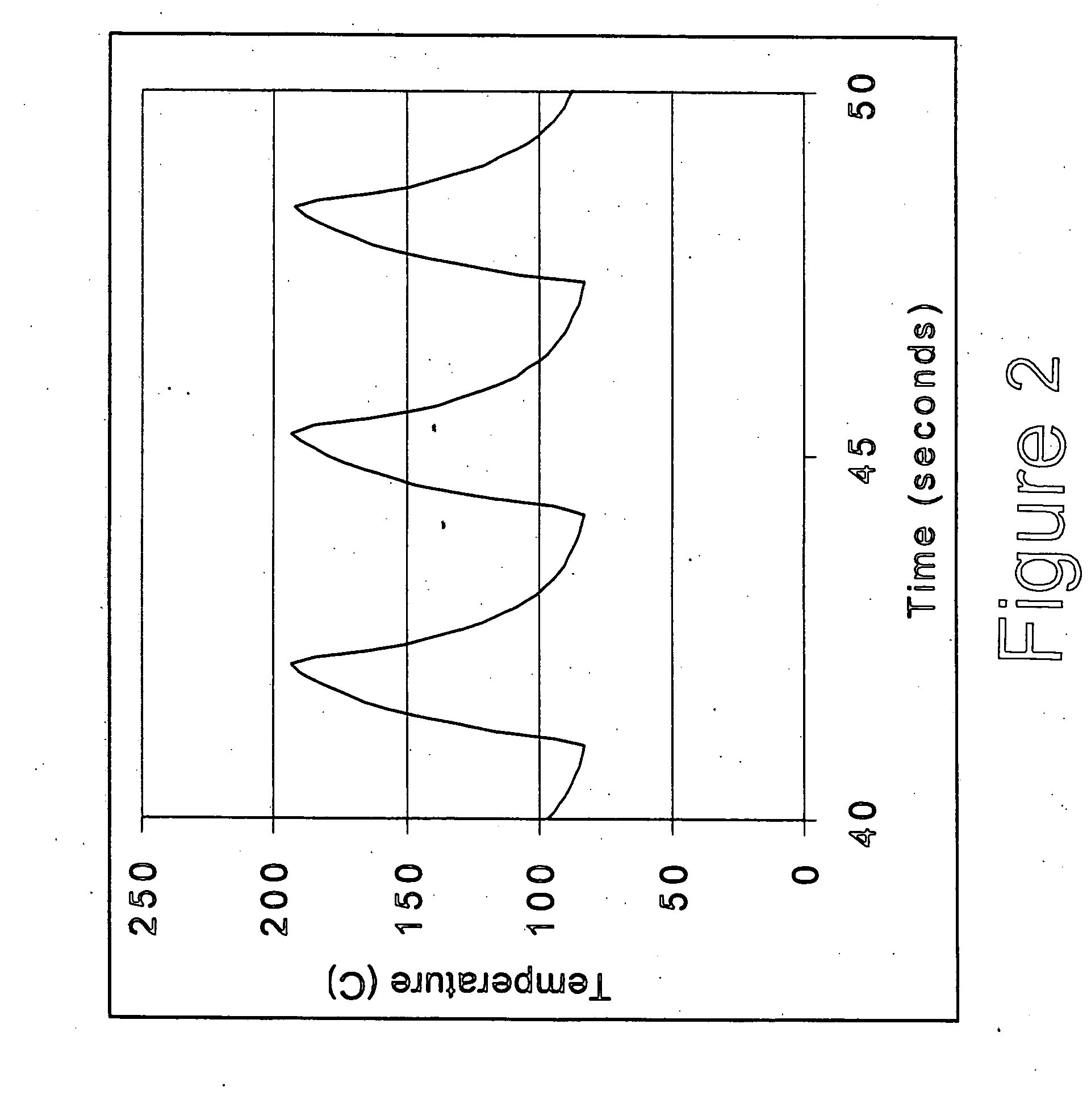Rapid thermal response induction heating system for platen embossing
- Summary
- Abstract
- Description
- Claims
- Application Information
AI Technical Summary
Problems solved by technology
Method used
Image
Examples
Embodiment Construction
[0017] What was required to solve the problems discussed herein above was a means of achieving a peak process temperature, controlling the time at this peak temperature, and then allowing the process web / stamper interface to cool to an optimum separation temperature in 10 seconds or less. Such a system would provide the relatively high process temperatures needed for rapid relaxation of stressed and / or displaced material, and also allow stamper / process web separation at an optimum lower temperature.
[0018] Handling and clamping related stresses can introduce elastic distortion in the process web. If these stresses are not completely relieved during the embossing process they will relax when the embossing press opens. The shape change associated with this post-embossing relaxation distorts the embossed image. In the case of optical memory disk replication, these distortion adversely affect track roundness. This problem generally becomes more significant as the thickness of the proces...
PUM
| Property | Measurement | Unit |
|---|---|---|
| Flexibility | aaaaa | aaaaa |
| Microstructure | aaaaa | aaaaa |
| Polymeric | aaaaa | aaaaa |
Abstract
Description
Claims
Application Information
 Login to View More
Login to View More - R&D
- Intellectual Property
- Life Sciences
- Materials
- Tech Scout
- Unparalleled Data Quality
- Higher Quality Content
- 60% Fewer Hallucinations
Browse by: Latest US Patents, China's latest patents, Technical Efficacy Thesaurus, Application Domain, Technology Topic, Popular Technical Reports.
© 2025 PatSnap. All rights reserved.Legal|Privacy policy|Modern Slavery Act Transparency Statement|Sitemap|About US| Contact US: help@patsnap.com



